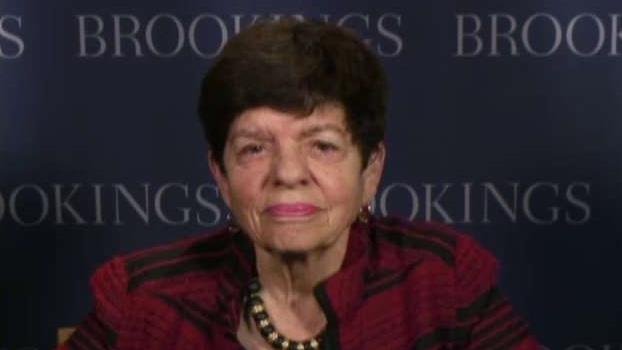Fmr. Fed Vice Chair Rivlin: Labor Market is Our Strength
All eyes on Wall Street have become increasingly fixed on the Federal Reserve given the snapback in the U.S. economy since the worst start to a new year ever back in January.
The U.S. central bank in December raised rates from a near-zero bound for the first time in nearly a decade, and said it anticipated four more hikes by the end of 2016. However, global-economic growth worries and a sharp slide in equity markets put the Fed on ice. Now, with a June meeting of the policy-setting Federal Open Market Committee looming on the calendar, many speculate that a summer rate hike is in the cards.
In fact, fed funds futures, a tool used to predict the likelihood in changes to U.S. monetary policy, show a 23% chance of a rate rise next month, while odds jump to 58% for at least one rate hike by July.
Former Federal Reserve Vice Chairwoman Alice Rivlin said essentially, it would be foolish to think the Fed would hold off on tightening monetary policy for much longer.
“If anybody is surprised by the Fed talking about a rate hike, they’ve been absolutely absent for a very long time,” she said in an interview on FOX Business Network’s Cavuto: Coast to Coast.
“We’ve known this was coming, the only reason it wouldn’t would be some really bad news on the economy, which Chairman [Janet] Yellen does not expect.”
Indeed, before the long Memorial Day weekend on Friday, Yellen said while the economy has been slow to recover from the financial crisis, “a great deal of progress has been made,” and a rate hike “may be appropriate in the coming months.”
Yellen pointed to a decline in the unemployment rate, which peaked at 10% during the height of the crisis, but which has since fallen back to 5%. Rivlin agreed the labor-market strength is the U.S. economy’s biggest upside.
“We have seen an increase in labor force participation; not a big one, we aren’t back to where we were before, but people are coming back into the labor market to look for jobs and that’s the reason why we have more employment,” she said.
On Friday, the Labor Department will release its latest figures on the health of the job market in May after a slight setback in April, which saw job creation come in just below the 200,000 level that it had seen for several months. Economists polled by Thomson Reuters expect the economy to have added 162,000 jobs this month, while the unemployment rate is forecast to tick down to 4.9% from 5%.
One caveat analysts at Barclays point out, though, is a strike among Verizon (NYSE:VZ) employees, which impacted about 40,000 workers.
“Whether this will pass fully into headline payrolls depends on the extent to which Verizon is using temporary hires to offset the effects of the strike, which may provide some offset to the effect of the strike on the headline payroll figures,” they explained in a May 20 note.
While there are bright spots for the U.S., Rivlin said there are also areas that have been slow to recover, particularly productivity growth, or the output per hour of work per worker. The Conference Board expects GDP per hour to fall by 0.2% this year in America.
Rivlin explained that no one really knows exactly why that measure of growth is slowing.
“Presumably it's slow demand and that’s slowing down investment. But it needn’t slow down public investment. There are all kinds of things we need to spend money for in the public sector – modernizing our infrastructure,” she said.




















